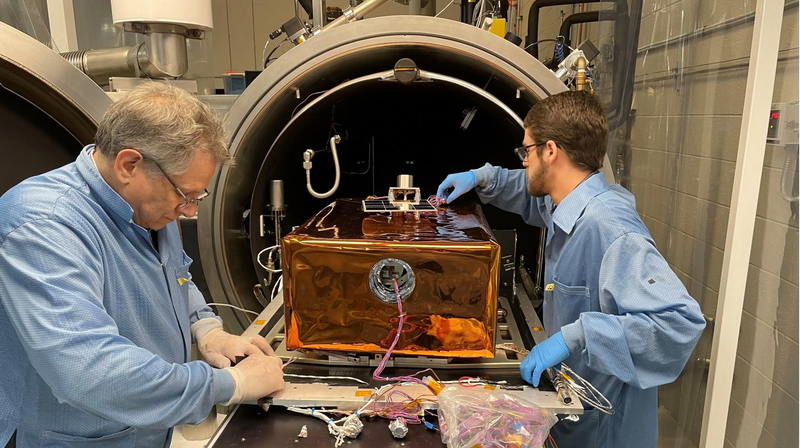This Advanced Quake Detector Will Land on the Moon With Artemis Astronauts

NASA is building a compact seismometer for its upcoming Artemis 3 mission to the Moon, hoping to learn more about the internal structure of the dusty satellite from its lunar tremors.
The Lunar Environment Monitoring Station (LEMS) was selected as one of the first three potential payloads for Artemis 3, which is scheduled for launch in 2026. LEMS is an autonomous, self-sustaining station that’s designed to withstand the cold lunar night and operate during the day, continuously monitoring ground motion from moonquakes.
The instrument is designed to sniff out moonquakes for a period of three months to up to two years, measuring the Moon’s geophysical activity over long durations of time.
Moonquakes are primarily the result of temperature swings on the Moon, which vary from 250 degrees Fahrenheit (121 degrees Celsius) during the day to -208° F (-133 C) at night. These extreme temperature variations cause the Moon’s surface to expand when it’s hot and contract when it’s cold, causing it to shake and crack.
The first tremors on the Moon were detected by seismometers placed on the lunar surface by the Apollo astronauts, which detected thousands of moonquakes between 1969 and 1977. Afterwards, the seismometers were turned off.
Artemis 3 will be the first mission to land astronauts on the lunar surface in more than 50 years, and the crew is set for touchdown on the Moon’s south polar region. “We don’t have seismic data from the lunar South Pole that can inform us on the local and global lunar subsurface structure,” Naoma McCall, LEMS co-investigator and seismologist at NASA’s Goddard Space Flight Center, said in a statement.
A recent study suggested that the Moon’s south pole is more prone to moonquakes and that the region is largely shaped by these seismic events. The findings could potentially pose a risk for the Artemis landing site, with evidence pointing to the quakes potentially catalyzing landslides of lunar regolith.
The Artemis program also aims to build a habitat for humans on the Moon in the south polar region, taking advantage of potential resources hidden in the permanently shadowed regions. In that case, understanding the moonquakes will be essential in planning humanity’s longterm stay on the Moon.
Studying moonquakes can help scientists figure out what goes on beneath the lunar surface since seismic waves travel at different speeds through different material, which could lead to a better understanding of the Moon’s origin story.
More: NASA Unveils First Astronaut Moon Kit Since Apollo
For more spaceflight in your life, follow us on X and bookmark Gizmodo’s dedicated Spaceflight page.

